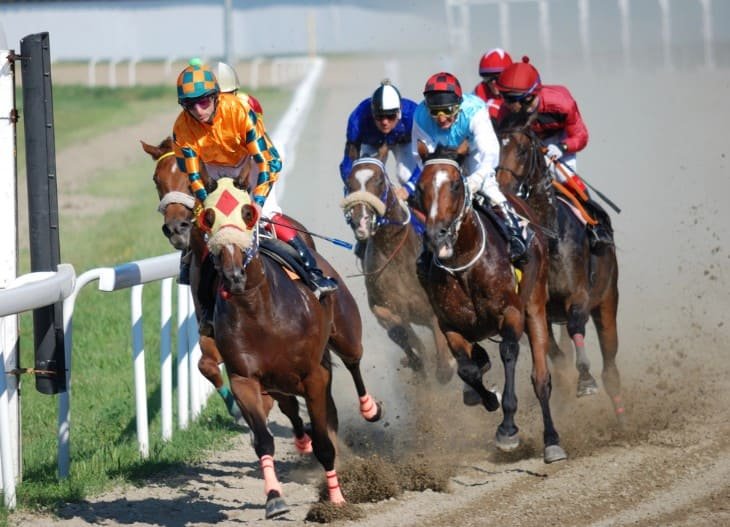The United Kingdom is a land of many traditions and equine art is one of them. You will hardly find another place on earth with such impressive equestrian culture, whether it's about horse racing, hunting or any other equestrian sport.
But horse racing is especially important in this case, as it dates back centuries. This sport puts horses in the spotlight. It created not just iconic racehorses and jockeys – it literally inspired numerous artworks, as horses and jockeys became the main subjects of many painters and sculptors.
That’s why it’s so important to celebrate these artists and their amazing talent and creativity. They created and contributed to the world of equestrian art in the way that they managed to capture the unprecedented beauty and grace of horses. The UK has produced many skilled artists who have made significant contributions to this genre and it’s time for us to pay a tribute. But before we start with the most prominent UK equine artists, let’s say a few words about this specific art movement.
A Few Words About Equestrian Art
As the name suggests, equestrian art refers to artworks that feature horses as their central subject. Throughout history, horses have held a special place in human culture, serving as symbols of power, beauty, speed, freedom, and partnership. So, it was natural to establish an art movement that captures the essence of these magnificent animals and reflects the close relationship between humans and horses.
Historical Significance:
With horses being integral parts of human lives for thousands of years, it doesn’t surprise that equestrian art dates back thousands of years, with ancient civilizations such as the Greeks, Romans, and Egyptians creating sculptures, paintings, and other forms of art depicting horses and riders.
Things were no different in mediaeval and Renaissance Europe, when equestrian portraiture became a symbol of aristocracy and power, often depicting rulers and military leaders on horseback.
Themes and Styles:
Equestrian artists use all kinds of themes for their artworks. Horse racing, hunting, warfare, work and leisure are just some of them. Moreover, these artists have implemented their unique styles and techniques. These artworks range from realistic and precise to symbolic and impressionistic representations of the movement, anatomy and spirit of horses – all in order to highlight their unique mix of grace and strength.
Horses have been subjects of various artists, including painters, drawers, sculptors and photographers.
Modern Day Equestrian Art:
Today, equestrian artists continue to explore new styles and techniques, combining traditional themes with modern perspectives. Some artists focus on capturing the emotional connection between humans and horses, while others emphasise movement and action in their works.
In both cases, equestrian art holds a timeless appeal. It celebrates the majesty of horses and the profound relationship between humans and these remarkable animals. Naturally, it continues to evolve and inspire artists and enthusiasts alike, with each era leaving its own, unique testament to this unique bond between people and horses.
Celebrating UK's Top Equine Artists
Now that we have learned a few things about this specific art movement, let’s take a look at some of the most prominent equine artists:
George Stubbs (1724-1806)
George Stubbs was an English painter, best known for his remarkable and anatomically accurate depictions of animals, particularly horses. He is considered one of the greatest animal painters and is often regarded as a pioneer in the field of comparative anatomy and equestrian art.
Born on August 25, 1724, in Liverpool, England, Stubbs showed an early interest in art and began studying painting at a young age. He was rather self-taught than received formal training, but his dedication to understanding the anatomy of horses and other animals set him apart from his contemporaries and contributed to the unparalleled accuracy of his paintings.
If you look closer at his artwork, you will find such a deep fascination with the anatomical structure of horses. He studied anatomy through dissections, creating detailed drawings of bones, muscles, and organs.
Equestrian Art and Legacy:
Stubbs is best known for his animal paintings, particularly horses. These paintings are celebrated for their lifelike quality, and for Stubbs’ ability to capture the movement, muscle structure, and character of the animals.
This leads us to one of his most famous works - "Whistlejacket," a stunning portrait of a racehorse that showcases his mastery of equine anatomy and form. As a true pioneer, Stubbs and his work had a profound influence on subsequent generations of animal and equestrian artists. He was the one who set new standards for anatomical precision and artistic realism back in the day.
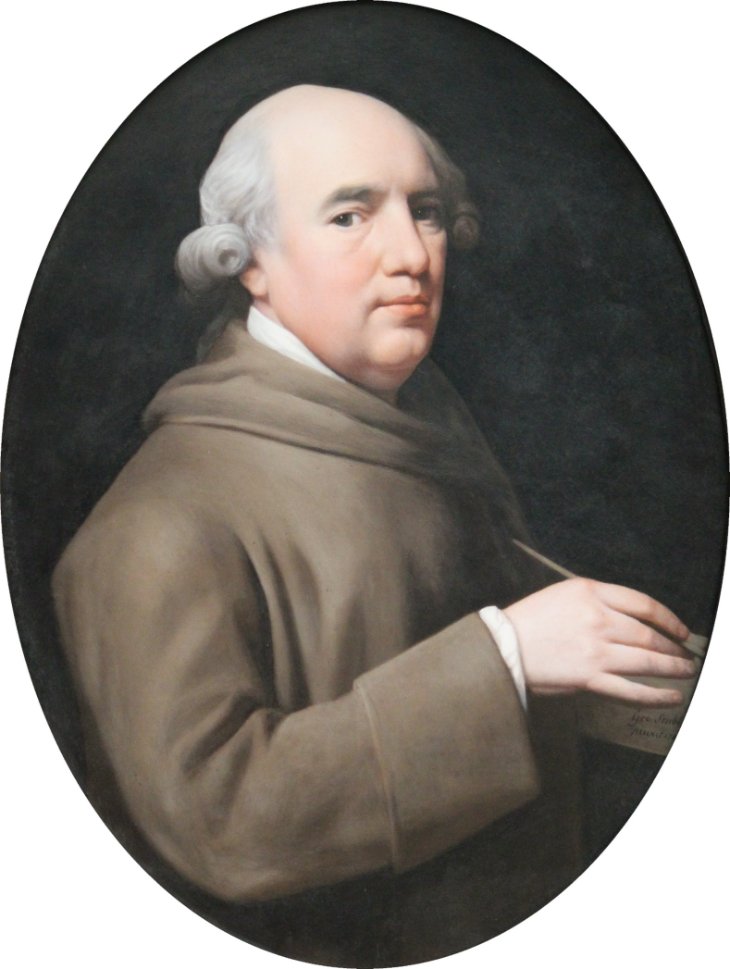
Scientific Contributions:
Stubbs was obsessed with the anatomy of animals and his detailed anatomical studies of horses culminated in his groundbreaking work "The Anatomy of the Horse." The book was published in 1766 as a series of engravings and text, and it represents a comprehensive and accurate study of equine anatomy that became a valuable resource for veterinarians and artists.
Variety of Subjects:
Besides horses, Stubbs also painted other animals, including dogs, lions, tigers, and exotic animals brought back from his countrymen's travels. Furthermore, he was also a skilled portraiture and landscape painter, though animals remained the most important aspect of his career.
George Stubbs' exceptional ability to merge art and science through his detailed anatomical studies and artistic skill left an indelible mark on the world of equestrian and animal art. His contributions to both art and scientific understanding continue to be admired and celebrated. Today, he is considered a towering figure in the history of British art.
Sir Alfred Munnings (1878-1959)
Sir Alfred Munnings started his artistic career as an apprentice lithographer. He later studied at the Norwich School of Art and ended up as one of the greatest painters of his era. The focus of his paintings has always been on things like the vibrant world of horse racing, rural life, and the British countryside. Experts always love to point out his deep affection for horses and his ability to convey their spirit, movement, and the atmosphere of equestrian events.
Munnings is famous for his paintings of racehorses, jockeys, and spectators and particularly for his ability to capture the excitement and energy of the sport. He had a remarkable ability to portray the dynamic movement of horses in action and a perfect sense of the racing atmosphere and the social aspects of these events.
Munnings was obsessed with the British countryside. So, besides horses, he also portrayed farm animals landscapes, and country pursuits. His work almost always celebrated the traditional way of life in rural England.
But besides themes, Munnings is also famous for his distinctive style characterised by loose brushwork and bold use of colour. His brushstrokes captured the immediacy and spontaneity of the scenes he depicted, while his impressionistic approach lent a sense of movement and vitality to his paintings, contributing to their energetic and evocative quality.
Presidency of the Royal Academy:
In 1944, Munnings was elected President of the Royal Academy of Arts. His presidency was notable for his outspoken advocacy of traditional artistic values and his opposition to modernist trends in art. For that reason, he was marked by controversies and clashes with proponents of modern art, because he was known for his passionate defence of traditional artistic techniques and subject matter.
Legacy and Honors:
Munnings' contributions to art were widely recognized during his lifetime, and he received numerous awards and honours for his work. He was knighted by King George VI in 1944 for his services to art.
Also, there is the Munnings Art Museum, located in Dedham, Essex, which celebrates his life and work, showcasing a comprehensive collection of his paintings, sketches, and memorabilia. His legacy endures through his extensive body of work, which continues to be admired for its vibrant portrayal of equestrian life and the English countryside.
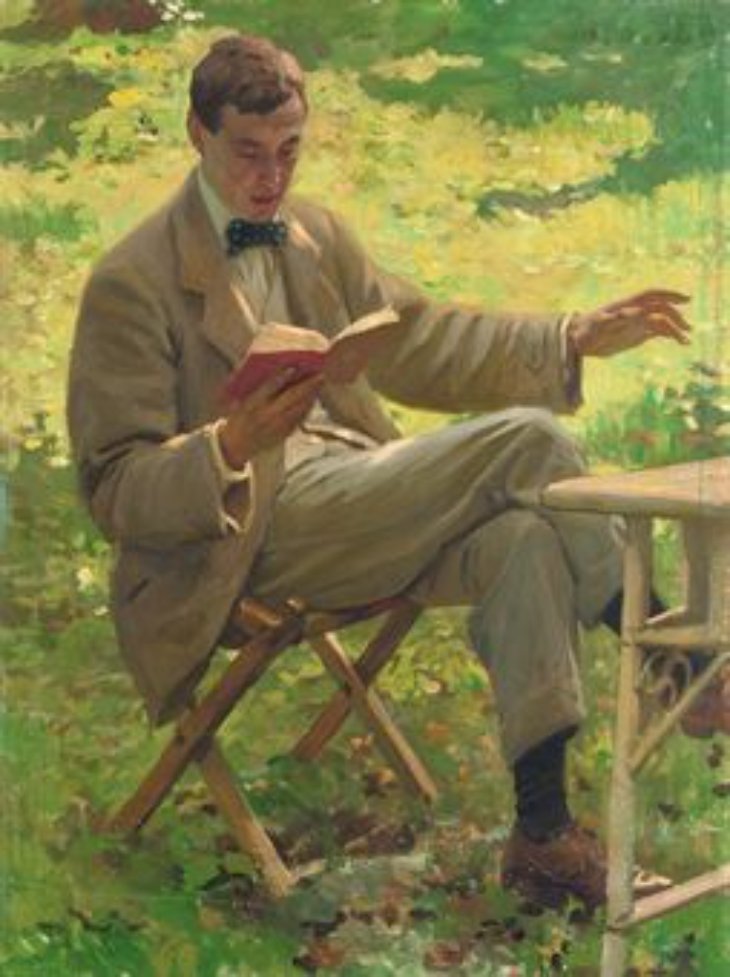
Lucy Kemp-Welch (1869-1958)
Lucy Kemp-Welch was a British painter and illustrator, best known for her equestrian and animal artwork. She gained widespread recognition for her ability to capture the energy, movement, and emotional depth of horses in her paintings. Her work often depicted scenes of rural life, equestrian activities, and the bond between humans and animals.
From her early days, Lucy Elizabeth Kemp-Welch showed a keen interest in art and began her formal art education at the Bushey School of Art in Hertfordshire. Kemp-Welch's talent for equestrian art quickly became evident, and she gained recognition for her ability to accurately catch horses in motion.
One of her most famous paintings is "The Straw Ride," which depicts a group of children on a horse-drawn cart. This painting perfectly showcases her ability to capture the joy and innocence of youth against the backdrop of powerful horses.
Kemp-Welch's skill as an artist led to her becoming a regular exhibitor at the Royal Academy of Arts. She gained significant recognition for her equestrian and animal paintings.
"The Gypsy Horse Fair" and Impressionistic Influence:
In 1902, Kemp-Welch exhibited "The Gypsy Horse Fair," a work that demonstrated her ability to capture the vibrant atmosphere of the event and the diversity of horses and people involved. Her style incorporated elements of Impressionism and Post-Impressionism, allowing her to convey movement and emotion with loose brushwork and vibrant colours.
World War I and Military Art:
During World War I, Kemp-Welch served as a nurse in a military hospital, but even there she continued to sketch and create art. The most famous are those several works that show the role of horses in the war effort. Kemp-Welch paid tribute to their contributions on the battlefield and highlighted their suffering.
This leads us to one of her most notable war-related paintings "Forward: The Gouty Horse at the Front," which portrays a wounded horse being tended to by soldiers. This magnificent painting captures compassion and resilience amid the harsh realities of war like no other.
Later Years and Legacy:
After the war, Lucy Kemp-Welch continued to paint and teach art. Her artwork often conveyed a deep understanding of animal anatomy and behaviour, making her an influential figure in the field of equestrian and animal art.
Her ability to capture the essence of horses and the emotional connections between humans and animals set her apart as a significant artist. Even today, her work remains celebrated for its realism, emotion, and portrayal of the timeless bond between people and horses.
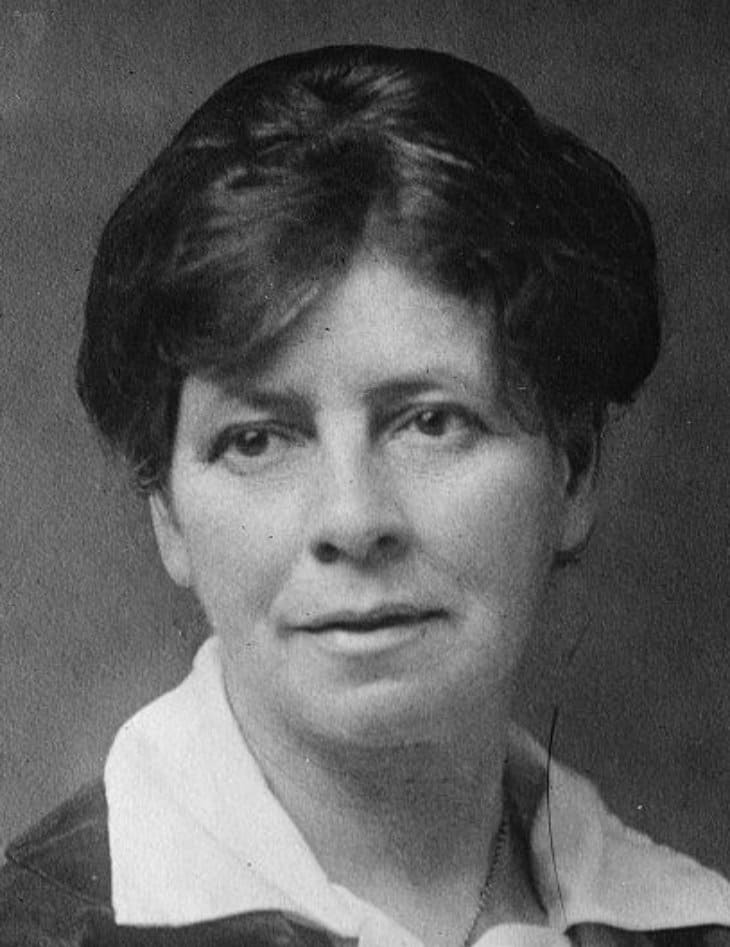
Lionel Edwards (1878-1966)
Lionel Edwards was a British artist, illustrator, and writer known for his contributions to equestrian and sporting art. In his paintings, we can often see magnificent scenes of fox hunting, horse racing, country life, and other outdoor pursuits. Edwards' artwork is celebrated for its vibrant illustrations of horses, hounds, and riders, with exceptional ability to capture the excitement, energy, and atmosphere of equestrian and sporting events.
Equestrian and Sporting Art:
Edwards' early exposure to equestrian activities and country life greatly influenced his artistic subject matter. He developed a passion for capturing the dynamics of fox hunting, horse racing, and other outdoor pursuits, while his illustrations often adorned books, magazines, and prints related to equestrian and sporting themes, making his artwork widely accessible.
Edwards gained recognition for his numerous illustrations in books, particularly those written by authors such as "BB" (Denys Watkins-Pitchford) and R.S. Surtees. He illustrated editions of classic equestrian and hunting literature, contributing to the visual appeal and enjoyment of these works.
Technique and Style:
Edwards is famous for his lively and energetic compositions. He had such an amazing sense for capturing the movement and action of horses and hounds, as well as the riders and hunters.
His illustrations often exuded a sense of authenticity, showcasing his deep understanding of equine anatomy, posture, and behaviour. Lionel Edwards' work became widely collected and admired, earning him a dedicated following of enthusiasts, equestrians, and art lovers. He was a member of prestigious artistic societies such as the Royal Institute of Painters in Water Colours and the Royal Society of British Artists.
Most importantly, Edwards' illustrations and paintings made a significant impact on subsequent generations of equestrian and sporting artists. In addition to his visual art, Edwards authored and illustrated several books, including instructional guides on equestrian topics and books aimed at young readers interested in horses and riding.
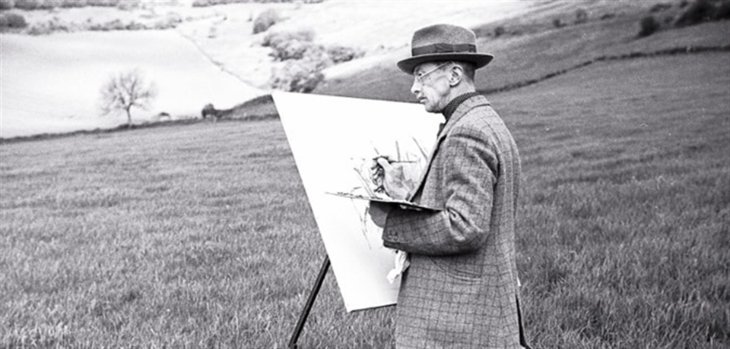
Mark Adlington
Mark Adlington is a pretty unique equine artist, famous for his unique style that combines realism with a touch of abstraction. His paintings often capture the essence and character of animals, including horses, through bold brushwork, vivid colours, and dynamic compositions. But these paintings go way beyond classic representation – they bring the spirit and individuality of his subjects.
Besides horses, Adlington's artwork spans a wide range of animal species, from large predators to domestic animals. His deep connection to nature and his subjects is evident in his paintings, which often reflect a keen observation of animal behaviour and anatomy, while the ability to capture the movement and energy of animals in motion is probably his key strength as an artist.
Mark Adlington has exhibited his work in various galleries and exhibitions, both in the UK and internationally. His art has garnered praise for its emotional impact, captivating audiences with its powerful portrayal of the natural world. His exhibitions often showcase a diverse collection of animal subjects, each depicted with a distinct style and perspective.
Collaborations and Projects:
Besides individual endeavours, Adlington has also been involved in various projects and collaborations. He has worked with organisations and institutions dedicated to wildlife conservation and raising awareness about threatened species. Adlington's art often serves as a medium to inspire conservation efforts and promote a deeper understanding of the animal kingdom.
He has also published books that feature his artwork and showcase his unique approach to wildlife and animal art. These books often provide insights into his creative process and offer a visual journey through his exploration of various species.
Sally Lancaster
When it comes to emotionally charged equine art, Sally Lancaster is one of the first names that come to mind. Her paintings are all about the deep connection between humans and horses, capturing moments of intimacy, trust, and understanding. Her unique style blends realism with a touch of abstraction, and that results in artworks that convey both the physical and emotional aspects of the subjects.
Medium and Technique:
Lancaster's preferred medium is oil painting. She uses a rich and nuanced colour palette to create depth and texture in her artworks. Her brushwork adds a sense of movement and vitality to her subjects, enhancing the emotional impact of each piece.
Connection to the Equestrian World:
Lancaster's deep connection to the equestrian world is evident in her art. She often draws inspiration from her personal experiences and interactions with horses, riders, and the equestrian lifestyle. Her work resonates with those who share a love and appreciation for horses.
Sally Lancaster's art has been featured in books and publications that highlight contemporary equine artists and their contributions to the art world and these publications often provide insights into her creative process and the inspiration behind her works.
Jennifer Bell
Jennifer Bell is recognized for her unique approach to equestrian art. Her paintings often capture the movement, power, and vitality of horses in motion. Bell's style combines realism with a touch of abstraction, resulting in dynamic and visually striking artworks.
Bell primarily works with oil paints, using bold brushstrokes and vibrant colours to create a sense of movement and life in her artworks. Of course, she has participated in various exhibitions, both solo and group shows, in galleries and art events in the UK and beyond. Her work has gained recognition for its unique interpretation of equestrian subjects and its ability to capture the essence of horses in action.

